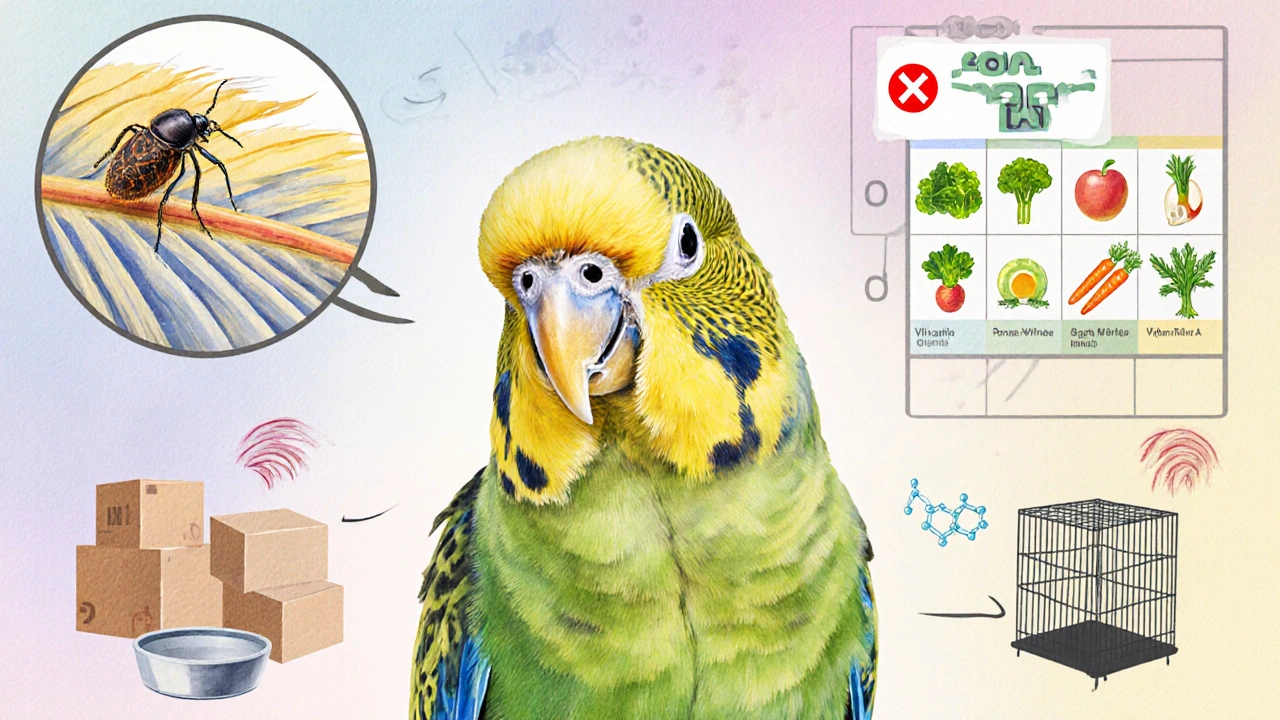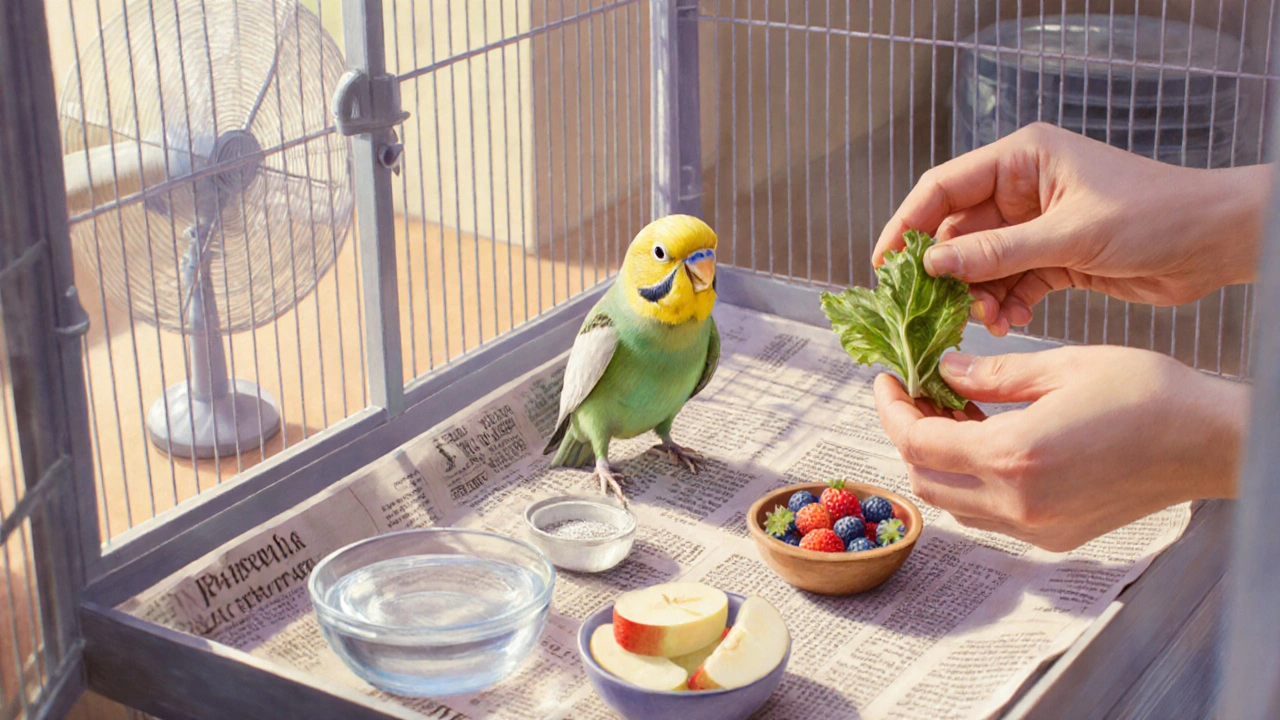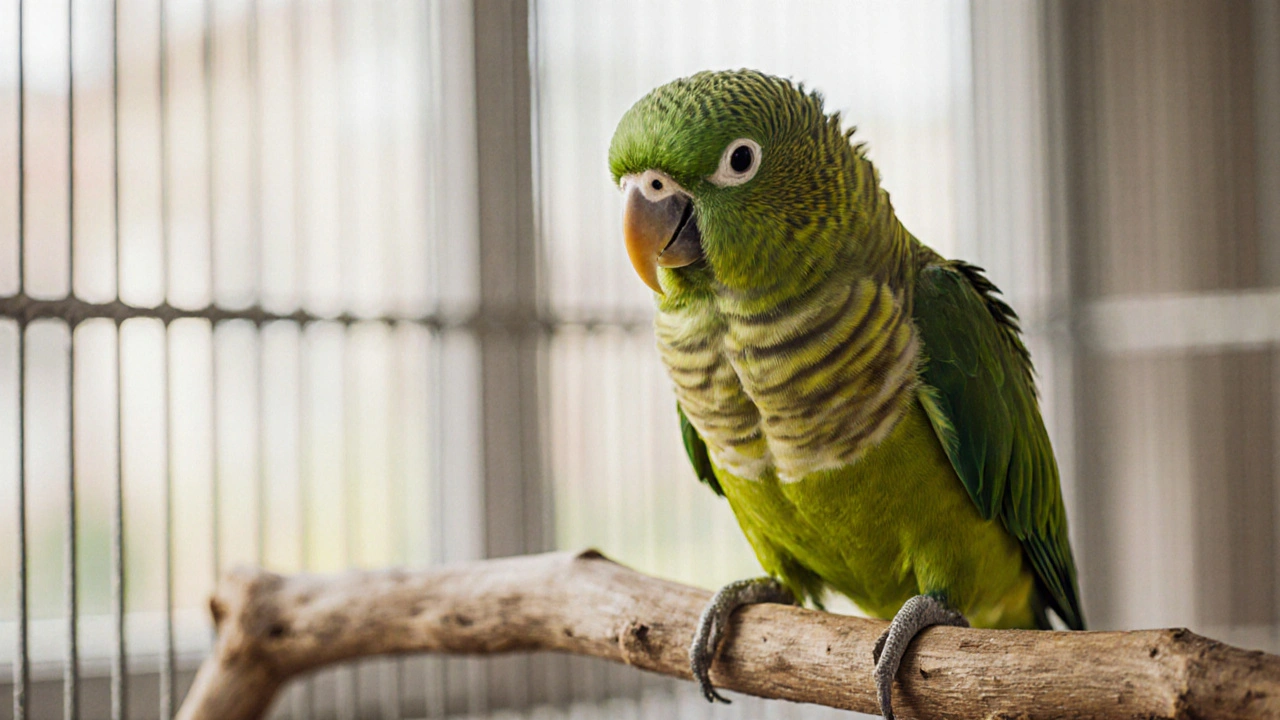Quick Summary
- Deplumation is abnormal feather loss that differs from the regular molt.
- Common triggers include parasites, nutrient gaps, stress, and hormonal shifts.
- Spotting uneven bald patches, dull feathers, or sudden shedding signals a problem.
- Immediate steps: check diet, reduce stressors, clean the cage, and consider a vet visit.
- Long‑term prevention focuses on balanced nutrition, regular parasite checks, and a stable environment.
What Exactly Is Deplumation?
When you hear the term Deplumation is a condition where birds lose feathers in an irregular, often alarming pattern, you might wonder how it differs from the normal “molt” that all feathered creatures go through. A regular molt is a predictable, seasonal process where a bird replaces old feathers with new ones in a tidy, orderly fashion. Deplumation, on the other hand, shows up as random bald spots, sudden thinning, or patches that never grow back.
Think of molt as a scheduled haircut and deplumation as an unexpected baldness that could hint at an underlying health issue. Recognizing the difference early can save your feathered friend from serious complications.
Normal Molt vs. Deplumation - Spot the Signs
| Aspect | Regular Molt | Deplumation |
|---|---|---|
| Pattern | Symmetrical, progressive bands | Random patches, often uneven |
| Timing | Seasonal (usually spring or fall) | Any time of the year |
| Feather Quality | New feathers grow in healthy, glossy | New growth may be thin, dull, or absent |
| Behavior | Bird appears normal, may preen more | Signs of discomfort, reduced appetite, lethargy |
| Underlying Causes | Natural renewal | Parasites, nutrition gaps, stress, hormonal issues |
Common Triggers of Deplumation
Most owners discover deplumation when they notice a bald spot on the chest or wings. Below are the five most frequent culprits.
- Parasites such as mites, lice, or feather‑eating beetles bite or eat feather shafts, causing the bird to lose feathers rapidly.
- Nutritional deficiency - especially lack of protein, vitamins A, D, and E - weakens feather strength and leads to shedding.
- Stress from sudden cage moves, loud noises, or unfamiliar humans can trigger a stress‑related molt that quickly turns into deplumation.
- Hormonal imbalance - for instance, during breeding season or after an injury - may force the bird to discard feathers to conserve energy.
- Dermatological infection (bacterial or fungal) weakens feather follicles, making them fall out.

How to Spot Deplumation Early
Early detection saves time, money, and the bird’s well‑being. Keep an eye out for these red flags:
- Uneven bald patches, especially on the back, chest, or tail.
- Feathers that look frayed, broken, or have a chalky texture.
- Increased preening or feather‑pulling behavior.
- Changes in appetite, weight loss, or dulled eye color.
- Sudden silence or reduced vocalizations.
If you notice any of these, start a quick investigation before the problem spirals.
Immediate Care Steps When Deplumation Appears
- Isolate the bird in a clean, quiet cage to reduce stress and prevent cross‑contamination.
- Conduct a parasite check by gently parting the feathers and looking for specks or moving insects. A quick dip in a mild, bird‑safe soap solution can help reveal hidden critters.
- Upgrade the diet: add a high‑quality pellet, fresh fruits, and leafy greens rich in vitamins A and E. For protein, offer boiled egg whites or mealworms (2‑3 times a week).
- Hydration matters - provide fresh water and a shallow dish of electrolyte‑enhanced solution if the bird looks dehydrated.
- Reduce loud noises, flashing lights, and any recent changes in cage placement.
- Schedule a vet appointment within 48hours if bald patches exceed 2cm, feathers look infected, or the bird appears lethargic.
Long‑Term Prevention Strategies
Preventing future deplumation is a mix of good husbandry and regular health monitoring.
- Balanced nutrition: Aim for a diet that supplies at least 18% protein, 10% fat, and a full spectrum of micronutrients. Commercially formulated psittacine pellets meet these targets when fed correctly.
- Routine parasite control: A quarterly dust‑bath with diatomaceous earth, combined with a vet‑approved antiparasitic spray, keeps mites at bay.
- Environmental stability: Keep the cage in a temperature‑controlled room (65‑80°F) and avoid sudden relocations.
- Enrichment: Provide toys, foraging puzzles, and regular out‑of‑cage time to lower stress levels.
- Health checks: Schedule a full exam with blood work and feather analysis at least twice a year.

When to Call the Vet - Signs That Need Professional Help
Even the most diligent owner may need a professional’s eye. Contact a avian veterinarian if you see any of the following:
- Rapid feather loss covering more than 15% of the body.
- Feather shafts that appear broken, yellowed, or have a foul odor.
- Persistent lethargy, weight loss, or abnormal droppings.
- Visible swelling, crusty skin, or open wounds on the feather base.
- Any sign of respiratory distress - wheezing, open‑mouth breathing.
The vet may run a feather pulp test, blood panel, or skin scrape to pinpoint the root cause and prescribe targeted medication.
Putting It All Together - A Simple Checklist
| Step | What to Do | Frequency |
|---|---|---|
| Visual inspection | Look for uneven patches, frayed feathers, or signs of parasites | Daily |
| Diet audit | Ensure balanced pellets, fresh produce, and protein source | Weekly |
| Cage hygiene | Clean perches, replace substrate, and dust‑bathe | Bi‑weekly |
| Stress check | Note any loud noises, new pets, or cage moves | As needed |
| Vet visit | Full exam with feather analysis | Twice a year or if symptoms worsen |
Key Takeaway
Understanding feather loss in birds helps you differentiate a harmless molt from a serious health alarm. By spotting early signs, tackling common triggers like parasites and nutrition gaps, and keeping a steady routine of care, you give your feathered companion the best chance to stay healthy and vibrant.
Frequently Asked Questions
Can a bird recover from deplumation without a vet?
Mild cases caused by diet or stress often improve with better nutrition, reduced stressors, and strict cage hygiene. However, if bald patches are large, the feathers don’t regrow, or you notice infection signs, a vet’s expertise becomes essential.
How often should I check my bird for parasites?
A visual check every few days is wise, but a formal parasite scrub should be done at least once every three months, especially during molting seasons.
Are there specific foods that help feather regrowth?
Foods rich in protein (boiled egg whites, cooked beans), vitamin A (carrots, sweet potatoes), and omega‑3 fatty acids (flaxseed oil, fish oil) support strong feather formation.
What’s the difference between a normal molt and stress‑induced feather loss?
A normal molt follows a predictable pattern and the new feathers look healthy. Stress‑induced loss appears random, often with dull or broken feathers, and the bird may show other anxiety signs like screaming or feather‑pulling.
Can environmental humidity affect feather health?
Yes. Very dry air can make feathers brittle, while overly humid conditions encourage mold and fungal infections. Keeping humidity around 40‑60% is usually optimal for most pet birds.


Abdulraheem yahya
October 14, 2025 AT 14:45I've been keeping African Greys for over a decade, and the first time I saw a random bald patch I thought it was just a molt, but the feathers never grew back, which set off a cascade of research and trial‑and‑error fixes.
Deplumation is sneaky because it mimics a normal molt at first glance, but the unevenness tells you something is off.
I started by overhauling the diet, swapping cheap seed mixes for a high‑protein pellet and adding boiled egg whites three times a week.
Then I introduced a daily dust‑bath with diatomaceous earth to knock out hidden mites that love to hide in the feathers.
Hydration is key, so I placed a shallow dish of electrolyte solution alongside fresh water, especially after the bird seemed a bit lethargic.
Stress reduction made a huge difference: I moved the cage to a quieter corner away from the TV and covered the side with a calming fabric.
Preeti Sharma
October 25, 2025 AT 09:57One could argue that the very concept of deplumation reflects a deeper philosophical truth about balance in nature; when we disturb the equilibrium, the bird's body manifests that discord through feather loss.
Thus, the condition is not merely a medical symptom but a reminder of the interconnectedness of diet, environment, and mental state.
Observing the feather pattern becomes a meditation on impermanence.
Ted G
November 5, 2025 AT 05:09The pharma giants don’t want you to know that cheap mineral supplements hide a covert agenda to keep your birds vulnerable.
Matt Tait
November 16, 2025 AT 00:21This guide is way too generic, you’re basically telling people to ‘feed them better’ without any real evidence.
Anyone with a half‑decent brain knows you need specific dosages, not vague suggestions.
Stop pandering.